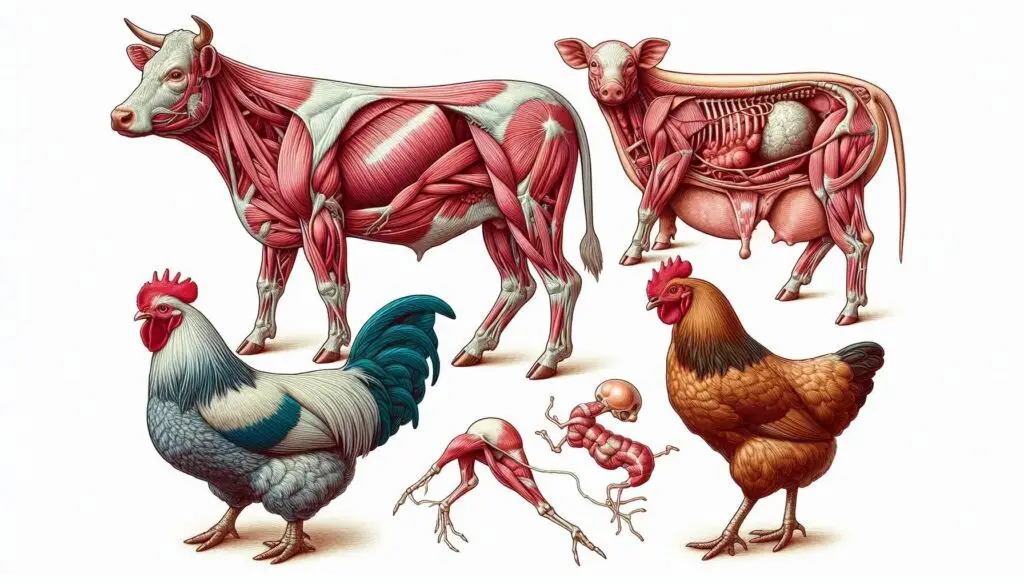Follicular Cysts in Cattle

Introduction
Follicular cysts in cattle are a significant concern for farmers and veterinarians alike. These cysts can affect the reproductive health of cows, leading to economic losses in the dairy industry. Understanding the causes, symptoms, diagnosis, and treatment options for follicular cysts is essential for effective management. This article will provide a comprehensive overview of follicular cysts in cattle, including valuable resources for further reading.
What Are Follicular Cysts?
Follicular cysts are fluid-filled structures that develop on the ovaries of cattle. They are classified as cystic ovarian disease. These cysts can disrupt normal reproductive cycles and lead to various health issues.
Characteristics of Follicular Cysts
- Size: Follicular cysts typically exceed 2.5 cm in diameter.
- Persistence: They last longer than 10 days without ovulation.
- Appearance: These cysts have thin walls and can feel soft during palpation.
For more details on the characteristics of ovarian cysts, you can refer to the Merck Veterinary Manual.
Causes of Follicular Cysts
Understanding the causes of follicular cysts is crucial for prevention and management. Several factors contribute to their development:
Negative Energy Balance
High-producing dairy cows often experience a negative energy balance shortly after calving. This condition occurs when energy output (milk production) exceeds energy intake (feed consumption). The resulting metabolic stress can disrupt hormonal regulation, leading to the formation of cysts.
Hormonal Imbalances
Hormonal imbalances play a significant role in the development of follicular cysts. Specifically, issues with luteinizing hormone (LH) and follicle-stimulating hormone (FSH) can prevent normal ovulation.
Genetic Factors
Certain breeds may be more predisposed to developing follicular cysts. For instance, Holsteins are known for their higher incidences of this condition due to genetic factors influencing reproductive health.
Other Contributing Factors
Additional factors that may contribute to the development of follicular cysts include:
- Retained placenta
- Dystocia (difficult calving)
- Stressful environments or management practices
For an in-depth look at the relationship between nutrition and reproductive health, visit The Dairy Site.
Symptoms of Follicular Cysts
Cows with follicular cysts may exhibit various symptoms that indicate reproductive issues. Recognizing these signs early can help in timely diagnosis and treatment.
Abnormal Estrous Patterns
Cows may show irregular estrous cycles or prolonged heat periods (persistent estrus). Some may not cycle at all (anestrus), making it difficult for farmers to identify when cows are ready for breeding.
Behavioral Changes
Cows with follicular cysts might display unusual behaviors:
- Mounting other cows frequently
- Increased vocalization
- Signs of restlessness or agitation
These behaviors can indicate hormonal changes associated with cystic ovarian disease.
Physical Examination Findings
During a veterinary examination, palpation may reveal enlarged ovaries. Veterinarians often use ultrasonography to confirm the presence of follicular cysts. This method allows for a clearer view of the ovaries and helps differentiate between types of ovarian structures.
For more information on diagnosing reproductive disorders in cattle, check out Beef Magazine.
Diagnosis of Follicular Cysts
Diagnosing follicular cysts involves a combination of clinical signs and veterinary examinations.
Veterinary Examination Techniques
- Rectal Palpation: A veterinarian can feel for enlarged ovaries during a rectal exam.
- Ultrasonography: This imaging technique provides detailed information about ovarian structures and helps confirm the diagnosis.
Differential Diagnosis
It is essential to differentiate between follicular cysts and other reproductive conditions such as luteal cysts or normal follicles. Luteal cysts have a thicker wall and may respond differently to hormonal treatments.
Treatment Options for Follicular Cysts
Treating follicular cysts involves addressing hormonal imbalances and restoring normal reproductive function.
Hormonal Therapy
Hormonal treatments are often effective in managing follicular cysts:
- Gonadotropin-Releasing Hormone (GnRH): This hormone stimulates ovulation by triggering the release of LH.
- Human Chorionic Gonadotropin (hCG): hCG can also induce ovulation and is sometimes used when GnRH is ineffective.
- Prostaglandins: These hormones help regress luteal tissue and may be used alongside GnRH or hCG treatments.
For more detailed information about hormonal treatments, refer to Veterinary Clinics.
Nutritional Management
Proper nutrition plays a vital role in preventing and managing follicular cysts. Ensuring that cows receive adequate energy and nutrients post-calving can help maintain hormonal balance.
Key Nutritional Strategies:
- Provide high-quality forage.
- Ensure balanced rations that meet energy needs.
- Monitor body condition scores regularly.
For guidance on nutritional strategies for dairy cows, visit Dairy Herd Management.
Prognosis for Cows with Follicular Cysts
The prognosis for cows diagnosed with follicular cysts is generally good with appropriate treatment. Many cows respond well to hormonal therapies within 15 to 30 days after treatment initiation.
Factors Influencing Recovery
Several factors can influence recovery rates:
- The overall health status of the cow.
- The timing of diagnosis and treatment.
- The presence of other underlying health issues.
In some cases, cows may require multiple treatments if they do not respond initially. However, spontaneous recovery is common shortly after calving as hormonal levels stabilize.
Prevention Strategies for Follicular Cysts
While specific prevention measures may vary, several strategies can help reduce the incidence of follicular cysts:
Managing Energy Balance Post-Calving
Ensuring that cows maintain an appropriate energy balance after calving is crucial. Implementing strategies such as:
- Early lactation feeding programs.
- Regular monitoring of body condition scores.
These practices can help mitigate metabolic stress that contributes to hormonal imbalances.
Regular Veterinary Check-Ups
Routine veterinary examinations allow for early detection and management of reproductive issues. Regular check-ups can help identify potential problems before they escalate into more significant concerns.
Stress Reduction Practices
Implementing stress reduction practices in farm management can improve overall herd health. Consider:
- Providing comfortable housing conditions.
- Reducing overcrowding.
- Minimizing abrupt changes in feeding or handling practices.
For more insights on managing stress in cattle, refer to Cattle Today.
Conclusion
Follicular cysts present a significant challenge in cattle reproduction but are manageable with proper understanding and intervention. By recognizing symptoms early, implementing effective treatment strategies, and focusing on prevention, farmers can enhance their herd’s reproductive health.
More from Animal Reproduction:
https://wiseias.com/repeat-breeder-cow-syndrome/
https://wiseias.com/anoestrus-in-dairy-cows-causes-effects-and-management/
https://wiseias.com/gynaecological-disorders-livestock-infertility/





Responses